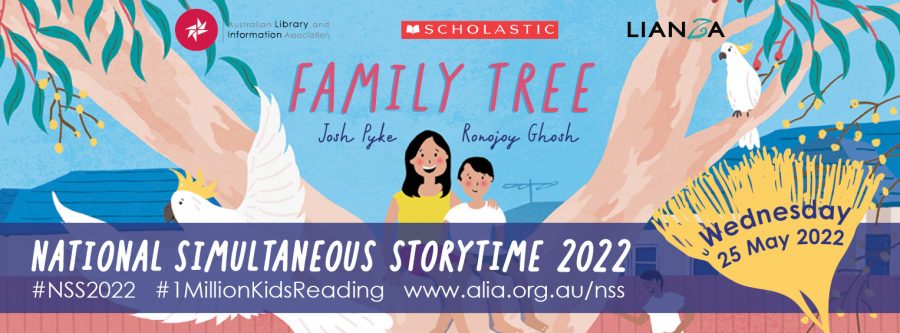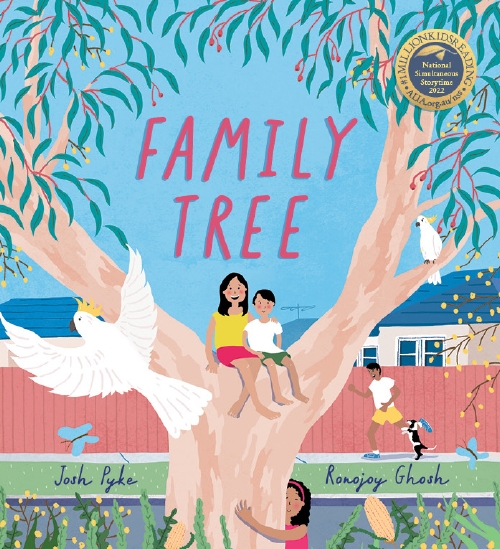Next week, on Wednesday 25 May at 11:00am AEST, we will be celebrating the 22nd National Simultaneous Storytime (NSS). Are you ready?
The event

National Simultaneous Storytime is an annual event organised by the Australian Library and Information Association (ALIA) with the aim of promoting the value of reading and literacy.
Each year an Australian picture book is chosen to be read simultaneously in libraries, schools, pre-schools, childcare centres, family homes, bookshops and many other places around the nations on either side of the Tasman Sea. Selected books explore age-appropriate themes and address key learning areas of the National Curriculum for Foundation to Year 6.
It is free to register for the event. If you do, on Monday 23 May you will receive various free downloadable material, including a PDF of the book, to support your own event. You can register right up until the event begins. There are also many other free teaching resources available on the website, including resources from Learn From Play, Clever Patch, and Clever Bean.
The book

The book selected for this year’s simultaneous story time is Family Tree written by Josh Pyke, illustrated by Ronojoy Ghosh and published by Scholastic Australia. Family Tree is a celebration of family, community and the circle of life. It begins with the planting of a seed and is told from the tree’s point of view. As the tree grows, so does the family.
‘It started with a seed,
and that seed was me.
And, over time, laughter filled my garden…
A heartfelt celebration of family, community and the seasons of life, to cherish and to share.’
Visit Scholastic Australia’s website to purchase your copy of the book.
To help build your enthusiasm, here is a video of Josh talking about his book Family Tree.
I hope you and your children enjoy this exciting event. I’d love to know how you celebrate. I’ll be joining in, reading along with my own copy or perhaps joining in with the event organised at my local library. There’s so much fun to be had in books and libraries.
What I like about Family Tree
I love the way this book is told from the point of view of the tree, the way it notices changes in the family and the community through the
Continue reading: Make Time for families in National Simultaneous Storytime 2022 – readilearn





